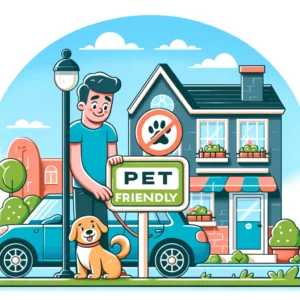Reducing Your Pet’s Carbon Footprint: Practical Tips for Eco-Friendly Pet Care
In today’s world, where environmental issues are becoming increasingly urgent, it is important for everyone to do their part in conserving the planet. This includes not only humans but also our beloved pets. As pet owners, we have a responsibility to ensure that our furry friends are not only well taken care of but also that their impact on the environment is minimized. In this blog post, we will explore practical tips for pet owners to reduce their carbon footprint and promote conservation efforts through their pet care routines.
One of the first areas where pet owners can make a positive impact on the environment is in their choice of pet food. Many commercial pet foods are made from ingredients that require a significant amount of resources to produce, such as meat from factory farms that contribute to deforestation and greenhouse gas emissions. By opting for sustainable and eco-friendly pet food options, such as those made from locally sourced and organic ingredients, pet owners can help reduce their pet’s carbon footprint.
Another important aspect of pet care that can contribute to environmental conservation is waste management. Pet waste, especially from dogs, can be a significant source of pollution if not properly disposed of. When pet waste is left on the ground, it can contaminate water sources and contribute to the spread of harmful bacteria and parasites. By picking up after our pets and disposing of their waste in an environmentally friendly manner, such as using biodegradable bags or composting systems, we can minimize the impact on our ecosystems.
In addition to waste management, pet owners can also consider adopting eco-friendly practices when it comes to grooming and hygiene. Traditional pet grooming products often contain harsh chemicals that can be harmful to both our pets and the environment. By using natural and organic grooming products, pet owners can reduce their pet’s exposure to toxins while also minimizing the release of harmful substances into the environment.
Furthermore, the issue of overconsumption extends to pet toys and accessories. Many pet owners are guilty of buying excessive amounts of toys and accessories for their furry friends, often without considering the environmental impact. Instead of purchasing new items, pet owners can explore alternatives such as upcycling or repurposing old household items into toys and accessories for their pets. This not only reduces waste but also encourages creativity and resourcefulness.
Lastly, transportation is another area where pet owners can make a difference. Instead of driving to the pet store or veterinary appointments, pet owners can consider walking or biking whenever possible. This not only reduces carbon emissions but also provides an opportunity for both pets and owners to get exercise and fresh air.
In conclusion, by making conscious choices in pet care routines, pet owners can significantly contribute to environmental conservation efforts. From sustainable pet food choices to proper waste management, grooming, and transportation, every small action can make a difference. Together, we can create a healthier and more sustainable future for both our pets and the planet.
Choosing Sustainable Pet Products
When it comes to caring for our pets, the choices we make in terms of the products we use can have a significant impact on the environment. One way to reduce our carbon footprint is by opting for sustainable pet products. Look for pet food that is made from organic and locally sourced ingredients. This not only supports local farmers but also reduces the carbon emissions associated with long-distance transportation.
Similarly, when purchasing pet toys and accessories, choose products that are made from eco-friendly materials such as recycled or biodegradable materials. Avoid products that are made from plastic or other non-biodegradable materials that contribute to landfill waste.
Another important consideration when choosing sustainable pet products is the packaging. Look for products that come in minimal or recyclable packaging. Excessive packaging not only adds to the waste but also requires more resources to produce and transport. By opting for products with minimal packaging, you can help reduce the overall environmental impact.
In addition to the materials used, it is also essential to consider the manufacturing process of pet products. Look for companies that have sustainable production practices and prioritize ethical sourcing. This includes ensuring fair labor practices and avoiding the use of harmful chemicals or pesticides in the manufacturing process.
Furthermore, consider the durability and longevity of the pet products you choose. Investing in high-quality, long-lasting products reduces the need for frequent replacements, ultimately reducing waste. Look for products that are designed to be durable and withstand the wear and tear of pet play and use.
When it comes to pet grooming and hygiene products, opt for those that are free from harsh chemicals and toxins. Many conventional pet grooming products contain ingredients that can be harmful to both pets and the environment. Look for natural and organic alternatives that are gentle on your pet’s skin and safe for the environment.
Lastly, consider the impact of pet waste on the environment. When disposing of pet waste, use biodegradable bags or consider composting pet waste in a designated area. Avoid flushing pet waste down the toilet, as it can contaminate water sources and harm aquatic ecosystems.
By making conscious choices when it comes to the products we use for our pets, we can contribute to a more sustainable future. Small changes in our purchasing decisions can add up to make a significant difference in reducing our environmental impact and ensuring a healthier planet for future generations.
Reducing Waste
Pet waste is a significant contributor to environmental pollution. One practical way to reduce waste is by using biodegradable poop bags when cleaning up after your pet. These bags are designed to break down naturally over time, reducing their impact on the environment.
Another way to reduce waste is by opting for eco-friendly cat litter. Traditional cat litter is often made from clay, which is not biodegradable and requires extensive mining. Instead, choose cat litter made from sustainable materials such as recycled paper or wood pellets.
Additionally, it is essential to consider the packaging of pet products when aiming to reduce waste. Many pet supplies, such as food and treats, come in excessive packaging that ends up in landfills. To minimize this impact, look for products with minimal or recyclable packaging. Alternatively, consider purchasing pet food in bulk to reduce the overall amount of packaging waste.
Furthermore, it is crucial to be mindful of the toys and accessories we buy for our pets. Many pet toys are made from non-recyclable materials such as plastic, which contributes to the growing waste problem. Instead, opt for toys made from sustainable materials like natural rubber or hemp. These materials are not only better for the environment but also safer for your pet.
When it comes to pet grooming, there are also ways to reduce waste. Instead of using disposable wipes, consider using washable and reusable grooming cloths. These cloths can be easily washed after each use, significantly reducing the amount of waste generated.
Lastly, consider donating or recycling old pet supplies that are no longer needed. Items such as pet beds, crates, and bowls can often be reused by animal shelters or pet adoption centers. If these items are no longer in usable condition, check with your local recycling center to see if they can be recycled.
By implementing these practices, pet owners can make a significant impact in reducing waste and promoting a more sustainable future for our environment and our beloved pets.
Furthermore, when you adopt a pet from a shelter, you are directly saving a life. Shelters are often overcrowded, and sadly, many animals are euthanized due to lack of space or resources. By choosing to adopt, you are giving an animal a second chance at life and providing them with a loving and caring home.
Not only does adopting a pet benefit the individual animal, but it also has a positive impact on society as a whole. When you adopt, you are helping to reduce the number of homeless animals on the streets. This, in turn, can help alleviate the strain on animal control agencies and local communities. By adopting, you are actively participating in the solution to the problem of pet overpopulation.
Moreover, adopting a pet from a shelter can be a rewarding experience for the whole family. Many shelter animals have had difficult pasts and may require some extra love and attention. However, the bond that forms between an adopted pet and their new family is often incredibly strong. Adopted animals are known to be loyal, grateful, and incredibly loving companions.
Additionally, when you adopt from a shelter, you are supporting a non-profit organization that works tirelessly to care for and find homes for animals in need. These organizations rely on donations and adoption fees to continue their important work. By adopting, you are not only providing a home for an animal but also contributing to the ongoing efforts of the shelter to rescue and rehabilitate other animals.
Lastly, adopting a pet can be a more affordable option compared to buying from a breeder. Adoption fees are typically much lower than the cost of purchasing a pet from a breeder. Additionally, many shelters provide veterinary care, vaccinations, and even microchipping as part of the adoption package, saving you money on initial expenses.
In conclusion, when considering adding a new furry friend to your family, adopting from a shelter is the best choice. By adopting, you are saving a life, reducing pet overpopulation, supporting a non-profit organization, and providing a loving home to an animal in need. The joy and fulfillment that come from adopting a pet are immeasurable, and the bond formed between you and your adopted companion will be a lifelong source of happiness.
Supporting Animal Conservation Efforts
Another way to promote conservation efforts through your pet care routines is by supporting organizations that work towards the protection and preservation of wildlife. Many zoos and wildlife sanctuaries offer adoption programs where you can symbolically adopt an animal and contribute to their care and conservation efforts.
By participating in these adoption programs, you not only provide financial support for the animals but also help raise awareness about their plight. The funds generated from these adoptions are used to provide food, medical care, and enrichment activities for the animals, ensuring their well-being in captivity. Moreover, the adoption fees often go towards conservation projects in the wild, such as habitat restoration and anti-poaching efforts.
Additionally, consider donating to organizations that focus on wildlife conservation and habitat restoration. These donations can help fund research, education, and on-the-ground efforts to protect endangered species and their ecosystems.
There are numerous reputable organizations dedicated to wildlife conservation, such as the World Wildlife Fund (WWF), the Wildlife Conservation Society (WCS), and the International Union for Conservation of Nature (IUCN). These organizations work tirelessly to protect and preserve endangered species, restore degraded habitats, and advocate for stronger conservation policies.
When donating to these organizations, you can specify how you want your contribution to be used. For example, you may choose to support a specific conservation project, such as protecting sea turtles or conserving rainforests. Alternatively, you can opt for a general donation that allows the organization to allocate the funds where they are most needed.
In addition to financial contributions, you can also volunteer your time and skills to support animal conservation efforts. Many organizations offer volunteer programs where you can assist with research, rehabilitation, and public outreach activities. By getting involved directly, you can make a tangible difference in the lives of animals and contribute to their long-term survival.
Furthermore, it is essential to stay informed and educated about the challenges facing wildlife and their habitats. By staying up to date with the latest conservation news, scientific research, and policy developments, you can become an advocate for wildlife and help raise awareness within your community. Sharing information through social media, organizing educational events, or even starting a local conservation group are all effective ways to make a positive impact.
Ultimately, supporting animal conservation efforts is not only beneficial for the animals themselves but also for the health and balance of our planet. Every small action, whether it’s adopting a symbolic animal, making a donation, volunteering, or spreading awareness, contributes to the collective effort of preserving Earth’s biodiversity for future generations.
Reducing Pet Travel Emissions
While it may be tempting to take your pet on every adventure, it is important to consider the environmental impact of pet travel. Air travel, in particular, contributes significantly to carbon emissions. Whenever possible, opt for alternative modes of transportation such as car or train, which have a lower carbon footprint.
When traveling with your pet, try to minimize the number of trips and plan your itinerary to reduce unnecessary travel. This not only helps in reducing your pet’s carbon footprint but also saves you time and money. Instead of taking multiple short trips, consider combining them into one longer trip. This way, you can reduce the overall distance traveled and the emissions associated with it.
Another way to reduce pet travel emissions is by choosing eco-friendly accommodations. Look for hotels or rental properties that have implemented sustainable practices such as energy-efficient appliances, recycling programs, and renewable energy sources. By supporting these establishments, you are encouraging the adoption of environmentally friendly practices in the hospitality industry.
Additionally, consider offsetting the carbon emissions of your pet’s travel by supporting carbon offset projects. These projects work towards reducing greenhouse gas emissions by investing in renewable energy, reforestation, and energy efficiency initiatives. By contributing to these projects, you can help counterbalance the environmental impact of your pet’s travel.
Furthermore, it is essential to pack responsibly when traveling with your pet. Avoid single-use plastic items and instead opt for reusable alternatives. Bring your pet’s food in reusable containers and use refillable water bottles. By reducing waste and minimizing the use of disposable items, you can lessen the environmental impact of your pet’s travel.
Lastly, educate yourself about the local environmental regulations and guidelines at your destination. Some areas may have specific rules regarding pets, such as leash laws or protected wildlife areas where pets are not allowed. By respecting and following these regulations, you can help preserve the local environment and minimize any negative impact caused by your pet’s presence.












